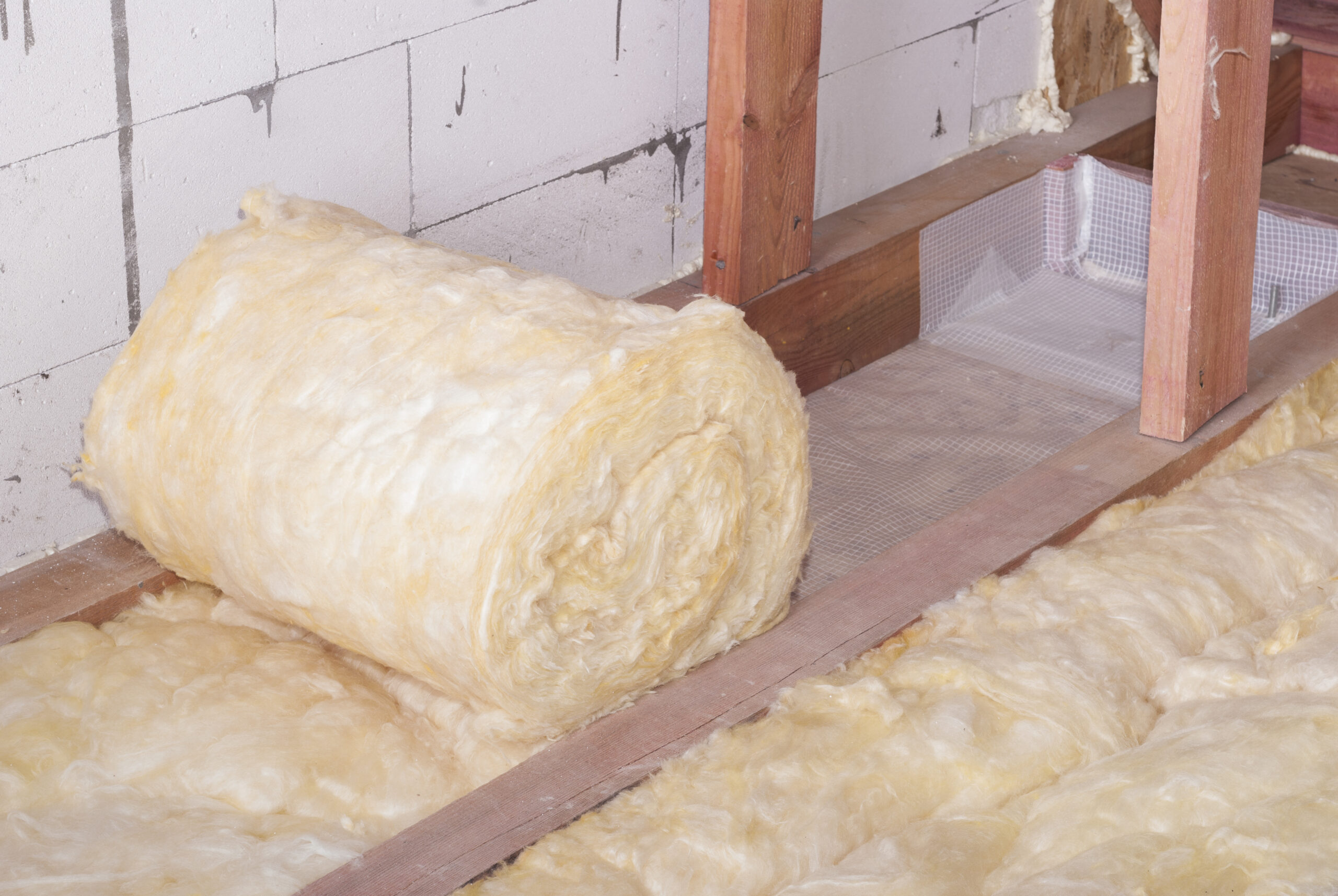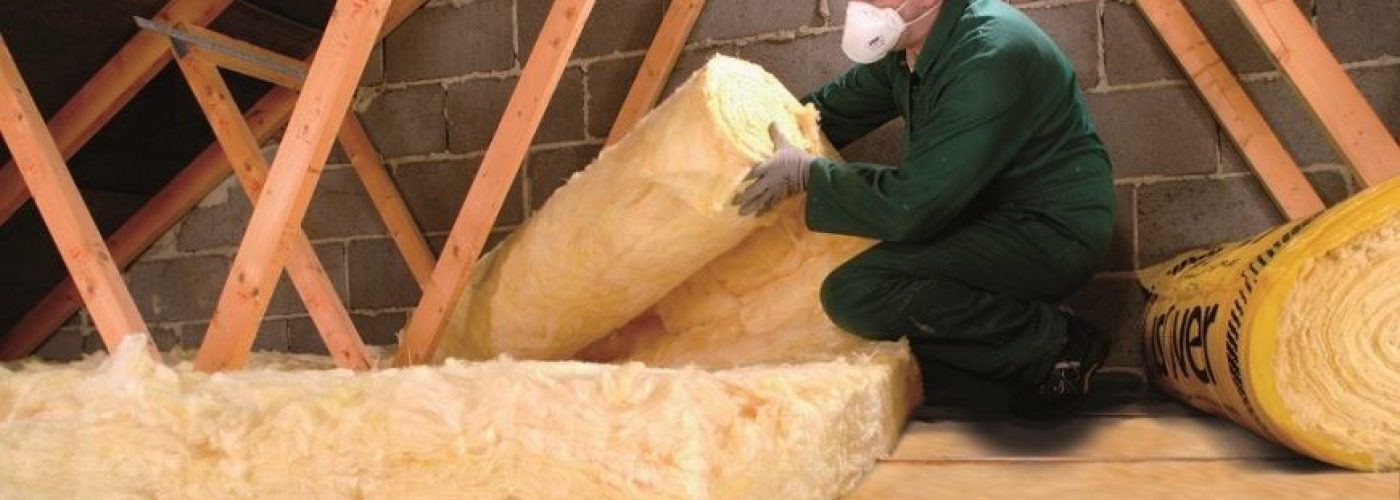Mineral wool insulation maintains consistent indoor temperatures through its high-density fiber structure that creates exceptional thermal resistance and reduces heat transfer. The material’s R-value of 3.0-4.3 per inch, combined with superior air sealing properties, prevents temperature fluctuations by blocking heat flow through walls, attics, and floors more effectively than traditional insulation materials.
This thermal stability occurs because mineral wool fibers trap air in countless small pockets, creating a continuous barrier against heat movement. Unlike materials that compress or settle over time, mineral wool maintains its insulating properties for decades, ensuring consistent performance that keeps indoor temperatures stable regardless of outdoor weather conditions.
Superior Thermal Performance Through Fiber Structure
Mineral wool achieves superior thermal performance through its unique manufacturing process that creates long, intertwined fibers from molten rock or slag. These fibers form a dense matrix that traps air effectively while maintaining structural integrity under compression. The material’s thermal conductivity remains consistently low across temperature ranges, providing reliable insulation performance in both heating and cooling seasons.
The fiber structure also resists moisture absorption, which maintains thermal performance even in humid conditions. Traditional insulation materials lose effectiveness when wet, but mineral wool retains up to 99% of its insulating value even when saturated, ensuring consistent temperature control year-round.
Bonus Tip: Install mineral wool with proper compression – aim for 10-15% compression to optimize thermal performance without reducing effectiveness. Over-compression reduces air pocket volume and thermal resistance.
Technical Specifications for Temperature Control
| Product Type | R-Value per Inch | Density (lb/ft³) | Operating Temperature Range | Moisture Resistance | Thermal Conductivity |
| Rock Wool Batts | 3.0-3.3 | 1.7-2.5 | -40°F to 1000°F | Excellent | 0.032-0.036 |
| Slag Wool Batts | 3.1-3.7 | 1.8-2.8 | -40°F to 1200°F | Excellent | 0.030-0.034 |
| Blown Rock Wool | 3.0-3.4 | 1.5-2.2 | -40°F to 1000°F | Excellent | 0.032-0.037 |
| Rigid Board | 3.8-4.3 | 4.0-8.0 | -40°F to 1000°F | Excellent | 0.026-0.030 |
Thermal conductivity values indicate heat transfer rate through the material, with lower numbers representing better insulating performance. The wide operating temperature range ensures consistent performance across all climate conditions without degradation or performance loss.
Installation Methods for Optimal Temperature Control
Proper installation techniques maximize mineral wool’s temperature control capabilities. Cut batts to fit snugly between framing members without gaps, ensuring continuous thermal coverage. The material’s semi-rigid structure maintains its shape during installation, reducing the compression issues common with fiberglass insulation.
For maximum thermal performance, install mineral wool in a continuous layer that eliminates thermal bridging through framing members. This approach requires careful attention to air sealing around penetrations and at the junction between different building components.
- Cavity installation requires precise fitting to eliminate air gaps that reduce thermal performance
- Continuous exterior insulation over sheathing provides enhanced thermal control by addressing thermal bridging
- Air sealing integration combines mineral wool with vapor barriers and air barriers for complete temperature control systems
Dense-pack blown installation fills irregular cavities completely, ensuring no thermal weak points that could cause temperature inconsistencies. Professional mineral wool insulation installation equipment achieves optimal density for both thermal and acoustic performance.
Bonus Tip: Use mineral wool’s fire resistance advantage by installing it around heat sources like chimneys and furnaces. The material won’t melt or burn, maintaining thermal barriers even in high-temperature applications.
Comparison of Insulation Materials for Temperature Stability
| Insulation Type | Thermal Performance | Temperature Consistency | Moisture Sensitivity | Longevity | Cost Range |
| Mineral Wool | Excellent (R-3.0-4.3) | Superior | Very Low | 50+ years | $0.80-2.50/sq ft |
| Fiberglass Batts | Good (R-2.9-3.8) | Good | Moderate | 25-30 years | $0.30-1.20/sq ft |
| Cellulose | Good (R-3.6-3.8) | Moderate | High | 20-25 years | $0.40-1.50/sq ft |
| Spray Foam Closed Cell | Excellent (R-6.0-7.0) | Excellent | Very Low | 30-50 years | $2.50-4.50/sq ft |
| Polyiso Rigid | Excellent (R-5.6-6.5) | Temperature Dependent | Low | 25-40 years | $1.20-3.00/sq ft |
Market analysis shows that 74% of homeowners report improved temperature consistency after upgrading to mineral wool insulation. The premium insulation market has grown 15% annually since 2020, with mineral wool representing the fastest-growing segment due to its superior performance characteristics.
Climate Zone Applications and Performance
Different climate zones present unique challenges for maintaining consistent indoor temperatures. Mineral wool performs exceptionally well across all climate zones due to its stable thermal properties and moisture resistance. In cold climates, the material prevents heat loss during winter while maintaining breathability to prevent condensation issues.
Hot, humid climates benefit from mineral wool’s moisture resistance and thermal stability. The material doesn’t lose effectiveness in high humidity conditions, maintaining consistent cooling performance throughout summer months. Mixed climates with significant seasonal temperature swings rely on mineral wool’s year-round stability.
Extreme temperature environments showcase mineral wool’s superior performance. The material maintains thermal effectiveness at temperatures from -40°F to over 1000°F, ensuring consistent indoor conditions regardless of outdoor weather extremes.
Moisture Management for Consistent Performance
Effective moisture management directly impacts temperature consistency. Mineral wool’s hydrophobic properties prevent water absorption that would compromise thermal performance. The material allows water vapor to pass through while shedding liquid water, maintaining optimal thermal conditions even in high-humidity environments.
Proper vapor barrier installation works with mineral wool to control moisture movement through building assemblies. This combination prevents condensation within wall cavities that could reduce thermal performance and create temperature inconsistencies.
The material’s quick-drying characteristics ensure rapid moisture recovery after exposure. Unlike organic insulation materials that can remain wet for extended periods, mineral wool returns to full thermal performance quickly after moisture events.
Energy Efficiency Benefits and Cost Savings
Consistent temperature control through mineral wool insulation directly translates to reduced energy consumption. The material’s superior thermal performance reduces heating and cooling system runtime, lowering utility costs while maintaining comfort. Studies show 20-30% energy savings compared to poorly insulated buildings.
Long-term performance stability ensures continued energy savings over the material’s lifetime. Unlike insulation that settles or degrades, mineral wool maintains its R-value for decades, providing consistent energy efficiency throughout the building’s life.
HVAC system benefits include reduced cycling frequency and more even temperature distribution. The consistent thermal barrier reduces hot and cold spots, allowing heating and cooling systems to operate more efficiently while maintaining uniform comfort levels.
Things to Consider Before Making a Decision
- Climate zone requirements determine appropriate R-values and installation methods for optimal temperature control
- Building construction type affects installation approach and thermal bridging considerations
- Budget for premium materials balances upfront costs against long-term energy savings and performance benefits
Evaluate your current insulation’s condition and performance gaps before upgrading. Thermal imaging can identify areas where temperature inconsistencies occur, helping prioritize improvement areas for maximum impact.
Consider the building’s air sealing needs alongside insulation upgrades. Even premium insulation like mineral wool cannot overcome significant air leakage that allows unconditioned air infiltration and temperature fluctuations.
Professional insulation installation contractor ensures optimal thermal performance through proper techniques and quality control. While mineral wool is more forgiving than some materials, achieving maximum temperature consistency requires attention to detail and proper installation practices.
Bonus Tip: Plan insulation upgrades during moderate weather seasons when HVAC systems aren’t working at peak capacity. This timing allows you to evaluate performance improvements without extreme temperature conditions masking the benefits.
Common Questions About Temperature Control
How quickly does mineral wool improve temperature consistency? Properly installed mineral wool provides immediate thermal improvement, with noticeable temperature stability within the first heating or cooling cycle after installation completion.
Does mineral wool performance change with age? High-quality mineral wool maintains its thermal properties for 50+ years without significant degradation, ensuring consistent temperature control throughout the building’s lifetime.
Can mineral wool help with temperature zones in large buildings? Mineral wool’s consistent thermal performance supports effective temperature zoning by preventing heat transfer between zones, allowing independent climate control in different areas.
How does mineral wool compare to spray foam for temperature consistency? Both materials provide excellent temperature control, but mineral wool offers superior breathability and easier repairs while spray foam provides better air sealing in irregular cavities.
Mineral Wool Temperature Control FAQ
What R-value of mineral wool do I need for consistent temperatures? Required R-values depend on your climate zone, with recommendations ranging from R-13 for mild climates to R-49 for attic applications in cold regions. Consult local building codes for minimum requirements.
How does mineral wool perform in extreme temperature conditions? Mineral wool maintains consistent thermal properties from -40°F to over 1000°F, making it suitable for extreme climate applications where temperature consistency is critical.
Can I install mineral wool myself or should I hire professionals? DIY installation is possible for simple applications like wall cavities, but complex installations requiring continuous coverage and air sealing benefit from professional expertise to achieve optimal temperature control.
Will mineral wool insulation eliminate hot and cold spots in my home? Properly installed mineral wool significantly reduces temperature variations by providing consistent thermal resistance, though complete elimination of hot/cold spots may require addressing air sealing and HVAC distribution issues.
How long does it take to see energy savings from mineral wool insulation? Energy savings from improved temperature consistency appear immediately in your first utility bill after installation, with full benefits realized within the first complete heating and cooling season.
Make the Right Decision
Mineral wool insulation delivers superior temperature consistency through its exceptional thermal properties and long-term performance stability. The material’s ability to maintain R-value over decades while resisting moisture and temperature extremes makes it an excellent investment for comfortable, energy-efficient buildings.
Success requires matching the right mineral wool product to your specific application and climate requirements. Consider factors like R-value needs, installation complexity, and budget constraints when selecting materials. Professional installation ensures optimal thermal performance and temperature control benefits.
Invest in mineral wool when consistent temperatures and long-term performance matter most. The material’s premium cost delivers value through reduced energy consumption, improved comfort, and decades of reliable thermal performance. Evaluate your building’s thermal needs and consult qualified installers to determine the best mineral wool solution for your temperature control requirements.
Reviewer
Mia Clark used her 9 years of experience in spray foam to review this article and offered input focused on helping companies make their services easier to understand and market effectively.
Author
Jared Baker, Owner and Director of Business, brings deep local insight and strong business expertise to Armored Insulation as a native of Mayfield. While continuing a full-time role as a Staff Officer with a federal natural resources agency, has successfully built multiple ventures, including Bluegrass Commercial Cleaning, Animal Tales, and Undercover Properties. As Armored’s Business and Marketing Manager, plays a key role in upholding the company’s focus on delivering top-tier service

